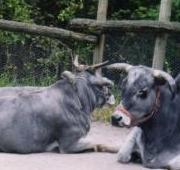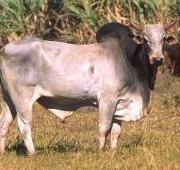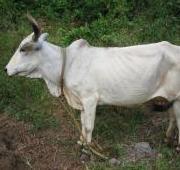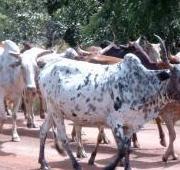 The zebu is a species of cattle that is native to the jungles of South Asia and the Zebu is the only cattle species that can easily adapt to life in the hot tropics. The zebu is also known as the humped cattle as the zebu has a very distinctive hump on its upper back, located behind the head and neck of the zebu.
The zebu is a species of cattle that is native to the jungles of South Asia and the Zebu is the only cattle species that can easily adapt to life in the hot tropics. The zebu is also known as the humped cattle as the zebu has a very distinctive hump on its upper back, located behind the head and neck of the zebu. Today the zebu can also be found in Africa, as the zebu was transported there from Asia many years ago. There are thought to be around 75 different species of zebu, with roughly half the zebu species found in Africa and the other half of the zebu species found in South Asia. The zebu has also been taken to South America from Africa, where zebu populations are continuously growing.
Today the zebu can also be found in Africa, as the zebu was transported there from Asia many years ago. There are thought to be around 75 different species of zebu, with roughly half the zebu species found in Africa and the other half of the zebu species found in South Asia. The zebu has also been taken to South America from Africa, where zebu populations are continuously growing.


Due to the manageable size of the zebu, and the ability of the zebu to cope with the tropicals climates, the zebu has been domesticated in both its Native home in Southern Asia and in Africa as the zebu is predominantly used for lighter agricultural work. The zebu is also farmed for meat in some areas and the zebu is considered to be holy in India where the zebu is thought to have originated from.
The zebu is thought to have both parasite and disease resistant properties which is another reason why the zebu are thought to thrive so successfully in their native tropical environments. The zebu has also been interbred with the native cattle of both Africa and Brazil, where the zebu is most common outside of Asia, and many farmers consider the presence of a hump and droopy ears to be a sign that their cattle is purely bred.
There are thought to be nearly 4 million zebu in farms around the world today, with the highest number of these being found in India, Brazil and the United States. The wild zebu can still be found in small herds in Southern Asia but the wild zebu populations are not nearly as high, mainly because of habitat loss due to deforestation.

